This discussion and review contains spoilers for Andor episode 11, “Daughter of Ferrix.”
“Tell me we are watching this carefully,” Supervisor Dedra Meero (Denise Gough) warns her subordinates early in “Daughter of Ferrix,” through a monitor flickering with static. Two episodes after Andor asserted that “Nobody’s Listening!,” the show makes it clear that there is always somebody watching. As Meero explains of the Empire’s plan to deal with rebels on Ferrix, “We want to put them in a box, stand back and watch.”
There is a tendency to talk about Andor as a “writerly” show. Part of this is because of the traditional argument that television is a “writers’ medium,” with the auteurs of the smaller screen tending to be writers like David Chase or Vince Gilligan. While Obi-Wan Kenobi seemed to be driven as much by director Deborah Chow as by writer Joby Harrold, Andor is indisputably showrun by writer Tony Gilroy, to the point that the show itself can feel like a metaphor for his relationship to Star Wars.
There is no denying that Andor is a very literary Star Wars show. Most obviously, it is very good at giving characters big speeches, with both Luthen Rael (Stellan Skarsgård) and Kino Loy (Andy Serkis) getting show-stopping monologues in “One Way Out.” Obviously, those moments rely on performance and direction for maximum impact, but they also clearly originate on the page. They would work almost as well in a book or on a stage.
Even “Daughter of Ferrix” features a character-defining monologue from Kleya Marki (Elizabeth Dulau). Kleya is Luthen’s right-hand woman. Vel Sartha (Faye Marsay) challenges Kleya, “What have you done for him lately?” Kleya replies, “I don’t have lately. I have always. I have a constant blur of plates spinning and knives on the floor and needy, panicked faces at the window, of which you are but one of many.” Suddenly, Kayla is no longer just a plot function, but a fully formed character.
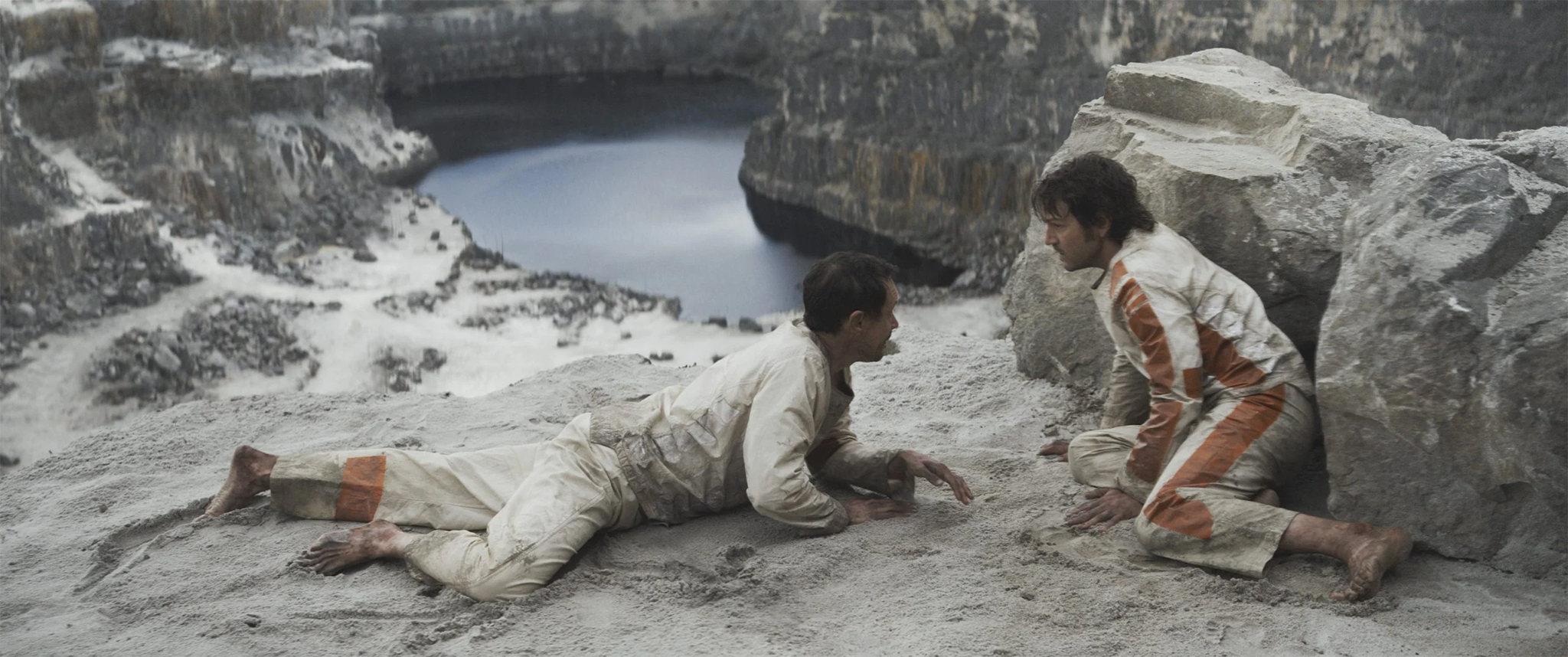
Of course, it’s worth stressing that Gilroy played a major part in defining the look and feel of Andor. Still, according to Toby Haynes, the showrunner also trusted the directors working on the show. “He really wanted me to take ownership of it, visually, and bring my own style to it,” Haynes explained. To pick a specific example, Haynes has talked about working with Skarsgård on the set to find “the spontaneity” in Luthen’s big speech at the end of “One Way Out.”
The production design on Andor is impressive, both true to the original trilogy and breaking new ground for the franchise. However, much of what makes Andor effective is how these sets, locations, and characters are filmed. Andor communicates a lot of its character work and themes through dialogue and action, but the show has been lucky enough to find a strong set of directors in Haynes, Susanna White, and Benjamin Caron. It is a shame that none are returning for the second season.
Indeed, “Daughter of Ferrix” feels very much like Andor is showing off. It’s an episode that leans heavily on the sort of traditional Star Wars spectacle that had been marginalized within the show to this point. This is obvious in a number of ways. The show gets its own big space battle when Luthen’s Fondor Haulcraft is confronted by a Cantwell-class Arrestor Cruiser. Indeed, the sequence arguably even features some lightsaber action, as Luthen’s craft produces blades to slice through TIE fighters.
“Daughter of Ferrix” also feels like a direct response to those fans who complained about the lack of Star Wars aliens in Andor, as the show has been quite human-centric. Gilroy has conceded that this was a conscious choice, acknowledging that “adding strong alien characters means that all of a sudden, there’s a whole bunch of new issues that we have to deal with that I don’t really understand that well or I just couldn’t think of a way to bake them into what we’re doing.”
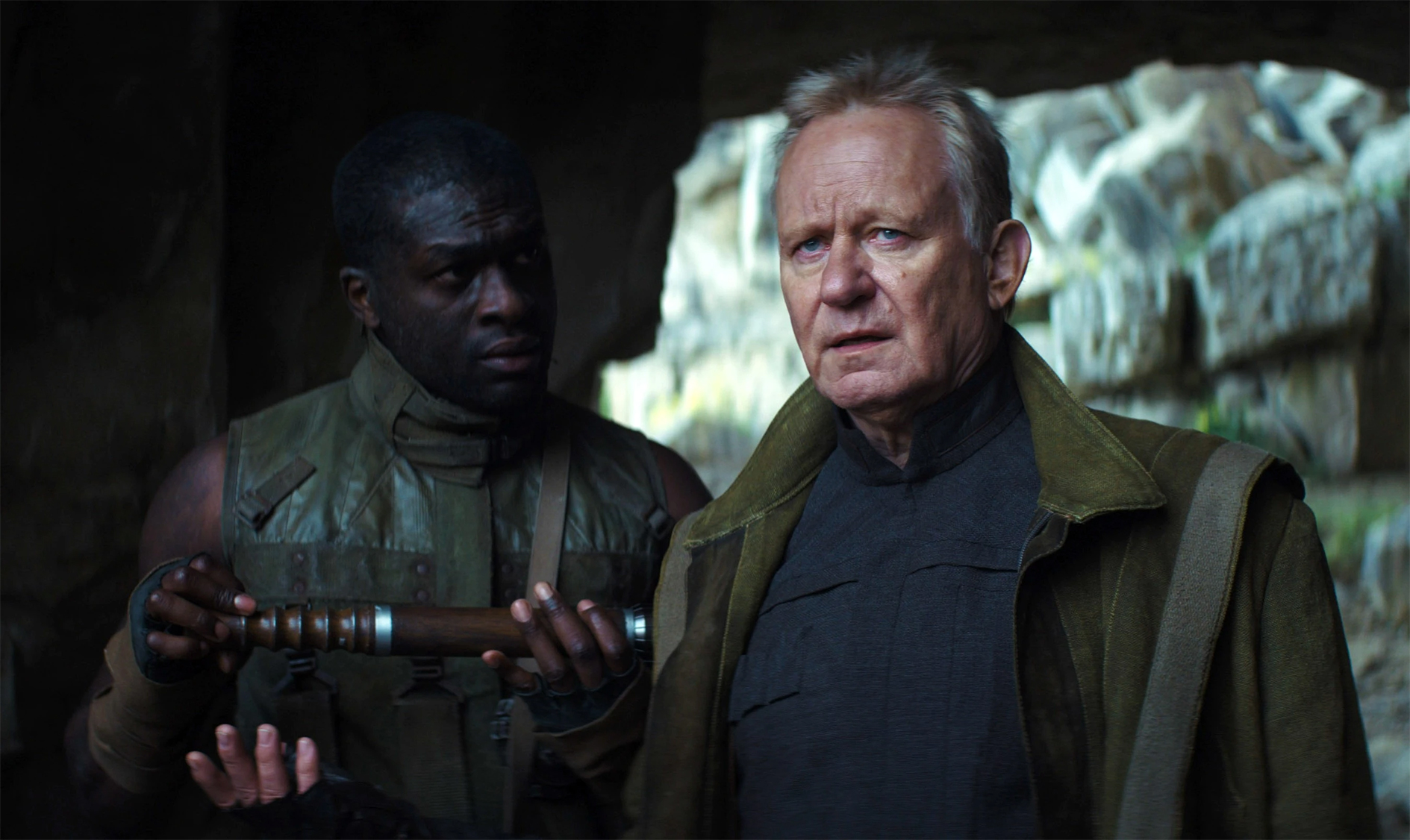
There have been a few aliens on the show to this point, but mostly in the background or in establishing shots. “Daughter of Ferrix” features a number of non-human creatures more prominently. Cassian Andor (Diego Luna) and Ruescott Melshi (Duncan Pow) are stopped by a pair of Narkinian fishermen, a nice practical design. Luthen ends up in a standoff with Saw Gerrera (Forest Whitaker) and his right-hand man, the Tognath rebel Benthic Two Tubes (Aidan Cook).
Notably, “Daughter of Ferrix” really foregrounds the show’s droid character. B2EMO (Dave Chapman) was introduced back in “Kassa” but hasn’t really received a lot of narrative real estate. “Daughter of Ferrix” spends a lot of time with B2EMO. In particular, it extends a lot of empathy towards the little robot. B2 is the audience’s viewpoint character following the death of Cassian’s adoptive mother, Maarva Andor (Fiona Shaw). The episode presents B2 as a terrified child.
There is something incredibly tender in the way that Brasso (Joplin Sibtain) tries to comfort and reassure the droid, as it attempts to process what has happened. “We’re going to take her out in a minute, if you want to say goodbye,” Brasso tells B2. “I’ll have them clear the room, if you want to be alone.” B2 stutters in reply, “I d-d-don’t want to be alone.” Brasso takes care of B2, giving the robot busywork and taking time off work to ensure that it is never left unattended.
This is a great example of the show’s visual storytelling. Director Benjamin Caron opens the scene from B2’s point of view, as the droid comes online. The sequence keeps cutting back to the camera that serves as the droid’s eye. Caron frames his shots and cuts the scene in such a way that the prop seems to actively emote. When Maarva’s body is taken out of the house, Caron doesn’t follow the gurney or the mourners. The camera stays firmly with B2, watching through doorways and windows.
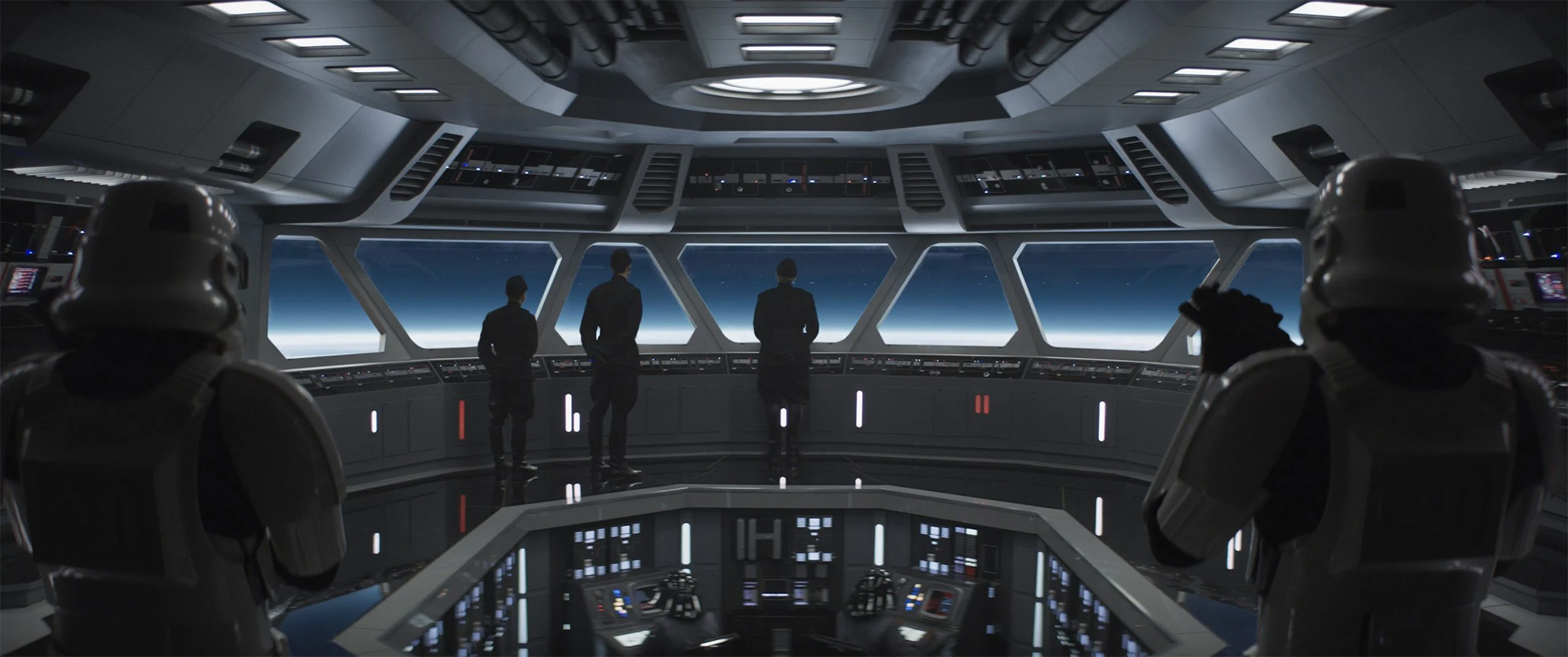
Andor is a show that is firmly rooted in the aesthetics of 1970s American cinema. This includes a paranoid style, reflected in the conspiracy thrillers of the era like The Conversation, Three Days of the Condor, or The Parallax View. That was the era of Watergate, after all. The president was so paranoid that his conspiratorial anxieties were captured on tape recorders that he himself had installed. Cinema has always been an inherently voyeuristic medium, but that was heightened during the 1970s.
Andor has always been a paranoid show. After all, Mon Mothma’s (Genevieve O’Reilly) entire plot thread is fixated on her attempts to avoid detection and cover her tracks. However, the show’s visual language has shifted with the thematic concerns of each of the major arcs. In “Narkina 5,” “Nobody’s Listening!,” and “One Way Out,” for example, Haynes framed his shots so even characters outside Narkina 5, like Mon Mothma or Syril Karn (Kyle Soller), felt trapped in seemingly safe spaces.
With “Daughter of Ferrix,” Caron pushes the visual language of the show away from captivity and towards surveillance. Andor constantly reminds its audience that everybody is being watched. Maarva’s gurney is glimpsed through windows by B2 and through a doorway by Imperial spy Corv (Noof Ousellam). The audience first peers at the Narkinian fishermen over a hill and through trees, from a vantage point that Cassian and Melshi will soon occupy.
In the previous three episodes, Mothma’s apartment has seemed like a prison. Shots were composed with the character framed by those neon doorways, as if in a gilded cage. In “Daughter of Ferrix,” Caron’s camera is a lot more voyeuristic. Mothma spies and eavesdrops on her daughter Leida (Bronte Carmichael) through a shutter. When Mothma and Sartha talk about Mothma’s dilemma, Caron brings the audience into the scene, peering through the edge of a doorway at a low angle.
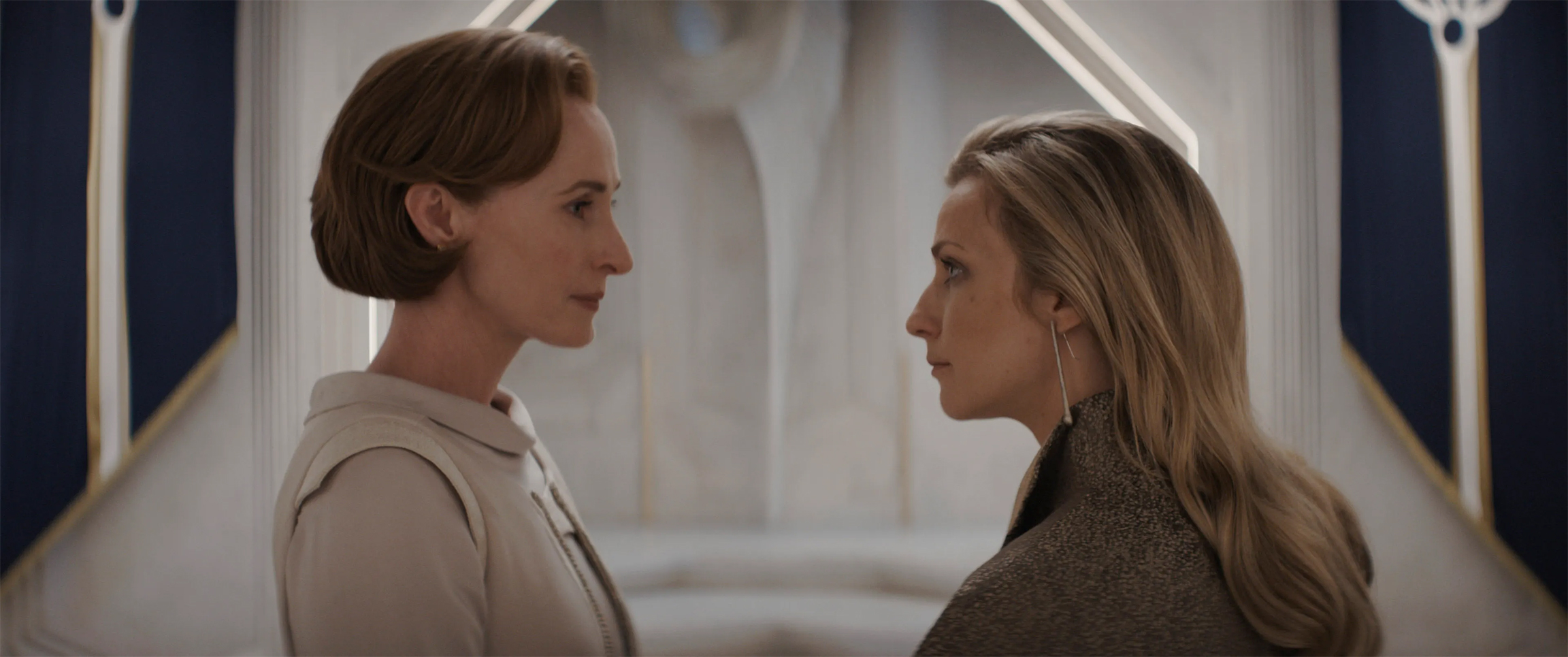
Everybody is watching and being watched. Eedy Karn (Kathryn Hunter) eavesdrops on her son’s late-night call with Linus Mosk (Alex Ferns). In return, Syril waits until his mother leaves their apartment to break into her safe and steal money necessary to travel to Ferrix. Even the episode’s production design plays into this. The Cantwell-class Arrestor Cruiser that confronts Luthen somehow has three gigantic satellite dishes all pointing in the same direction, as if listening to the entire cosmos.
This theme of surveillance and paranoia permeates the episode. There is a lot more video communication than in earlier episodes, with Meero directly addressing her subordinates on Ferrix, Kleya broadcasting to Luthen’s ship in orbit, and Mosk reaching out to Karn in the dead of night. These communications devices are imperfect. Kleya’s conversation with Luthen is cut off sharply, while Mosk and Karn struggle to understand each other amid the static and signal decay.
After all, surveillance does not facilitate communication. Luthen’s subterfuge makes it impossible for Gerrera to trust him. “You have people everywhere, don’t you?” Gerrera demands. Luthen pretends that Two Tubes is a spy, causing enough confusion to allow him to draw a pistol. It’s a situation that almost becomes lethal for everybody involved because it is nearly impossible for these people to trust each other. Ultimately, Luthen breaks the stalemate by trusting Gerrera.
As the show rushes towards its season finale, Andor remains a rich text. It communicates as much visually as it does through dialogue. Andor is a remarkable machine, with everything in the show seeming to work towards a common narrative and thematic end. In some sense, even Dedra Meero would approve. Andor itself deserves (and rewards) close watching.

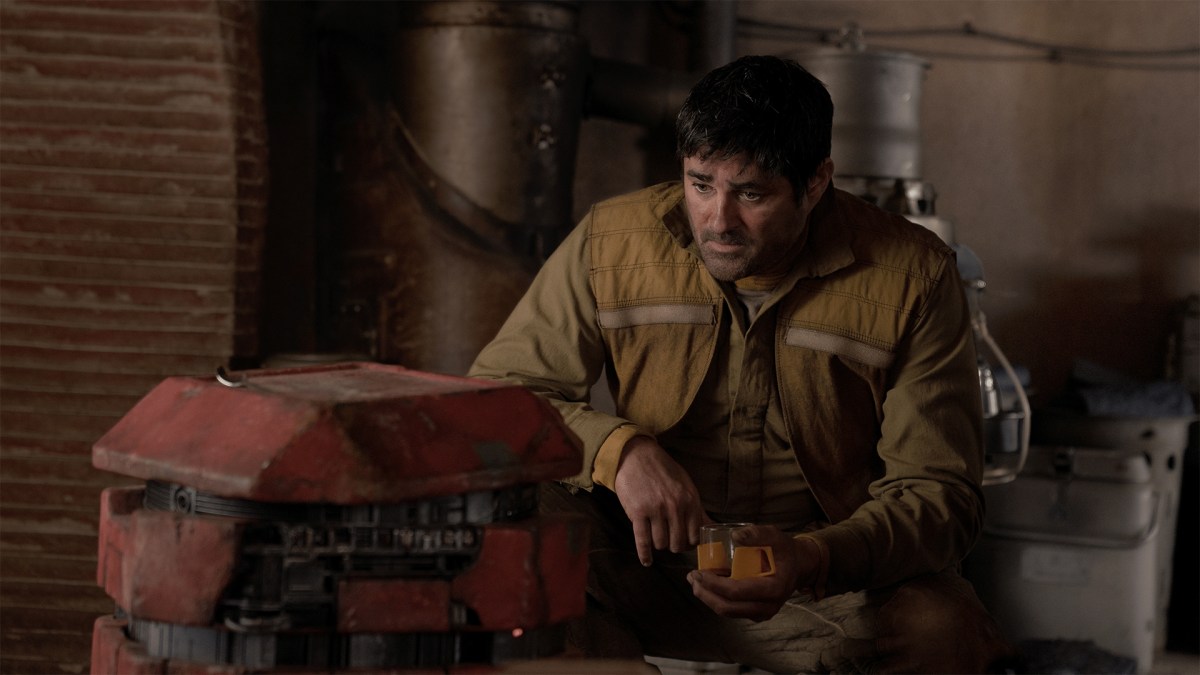




Published: Nov 16, 2022 09:56 am